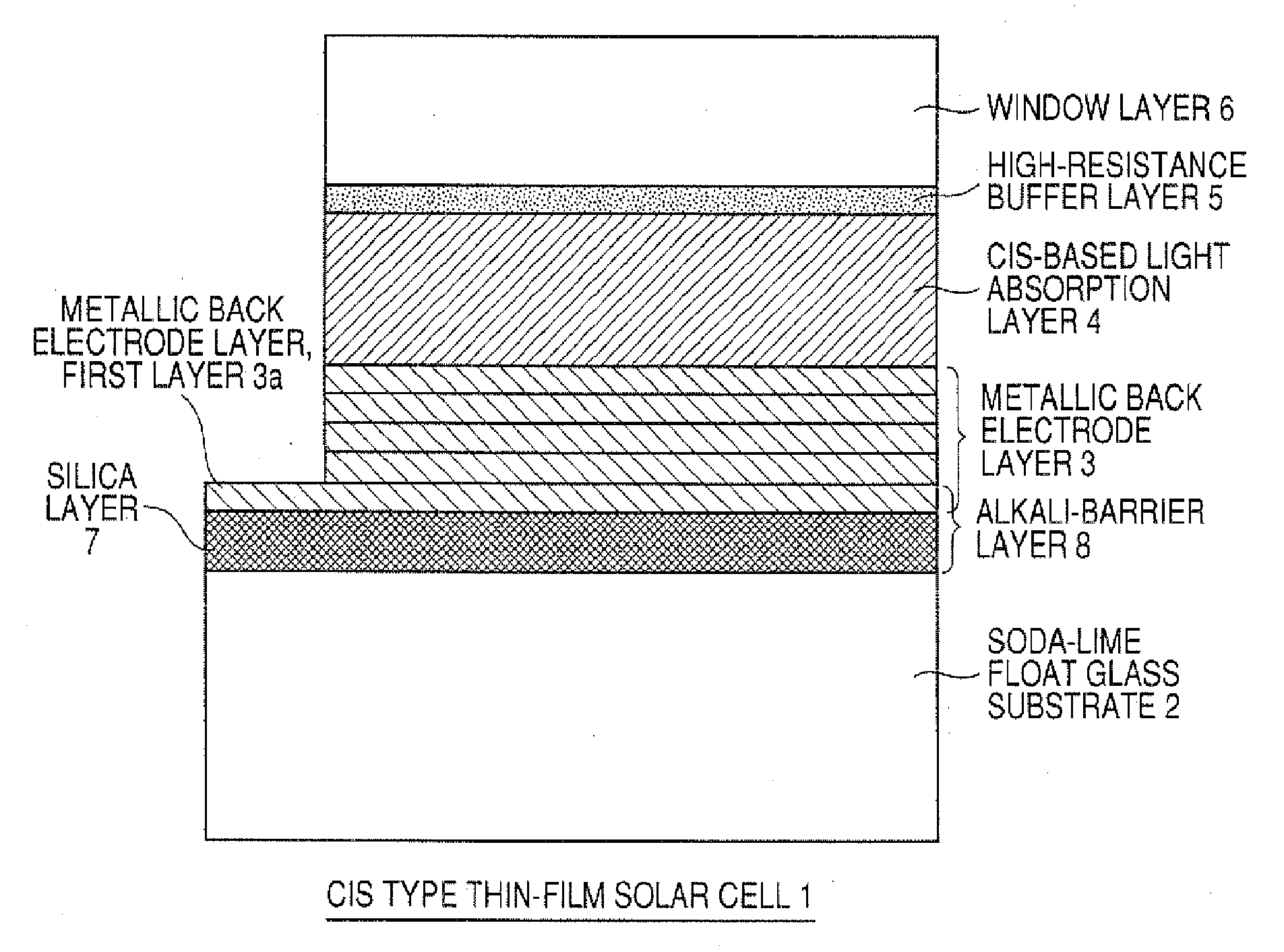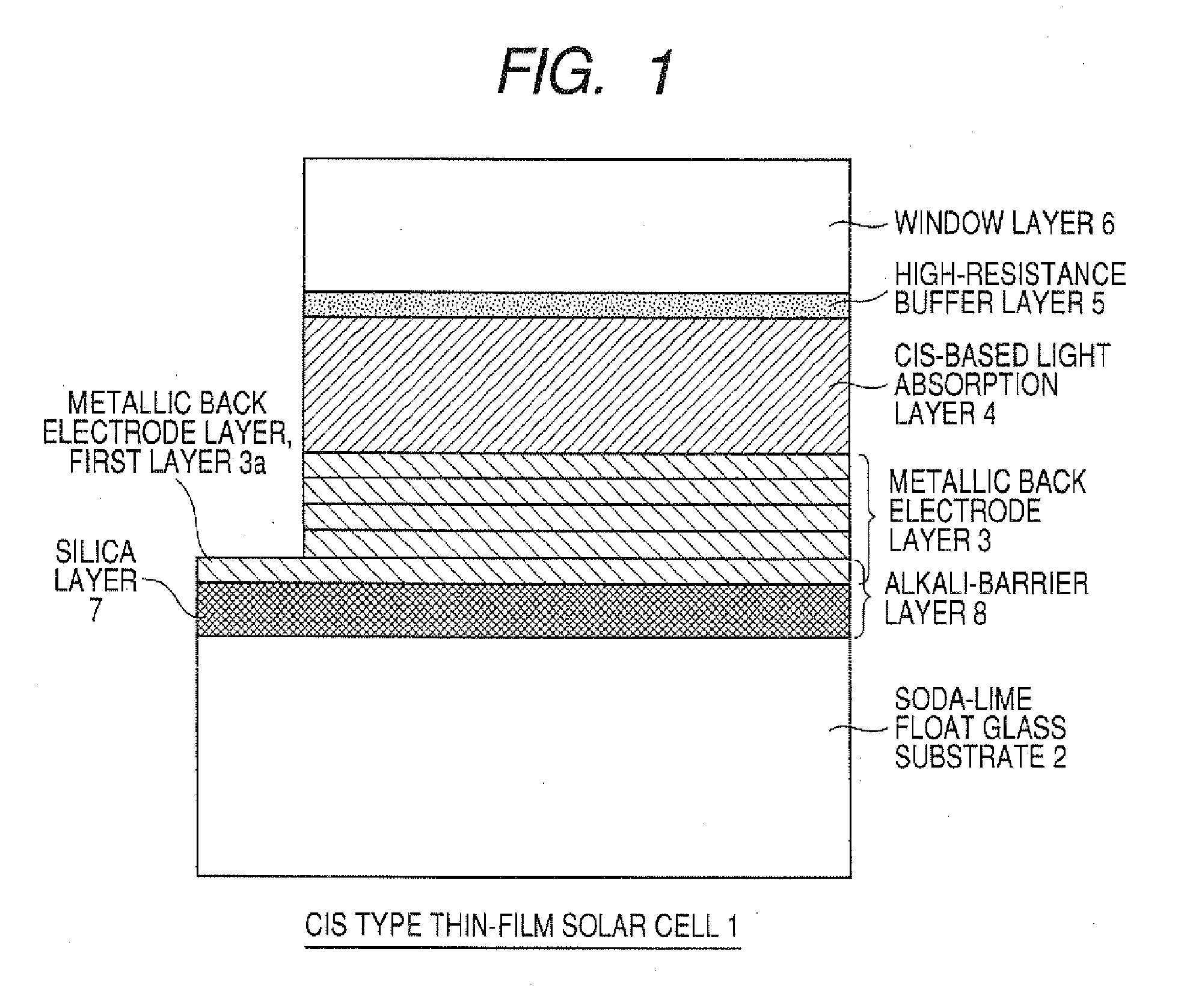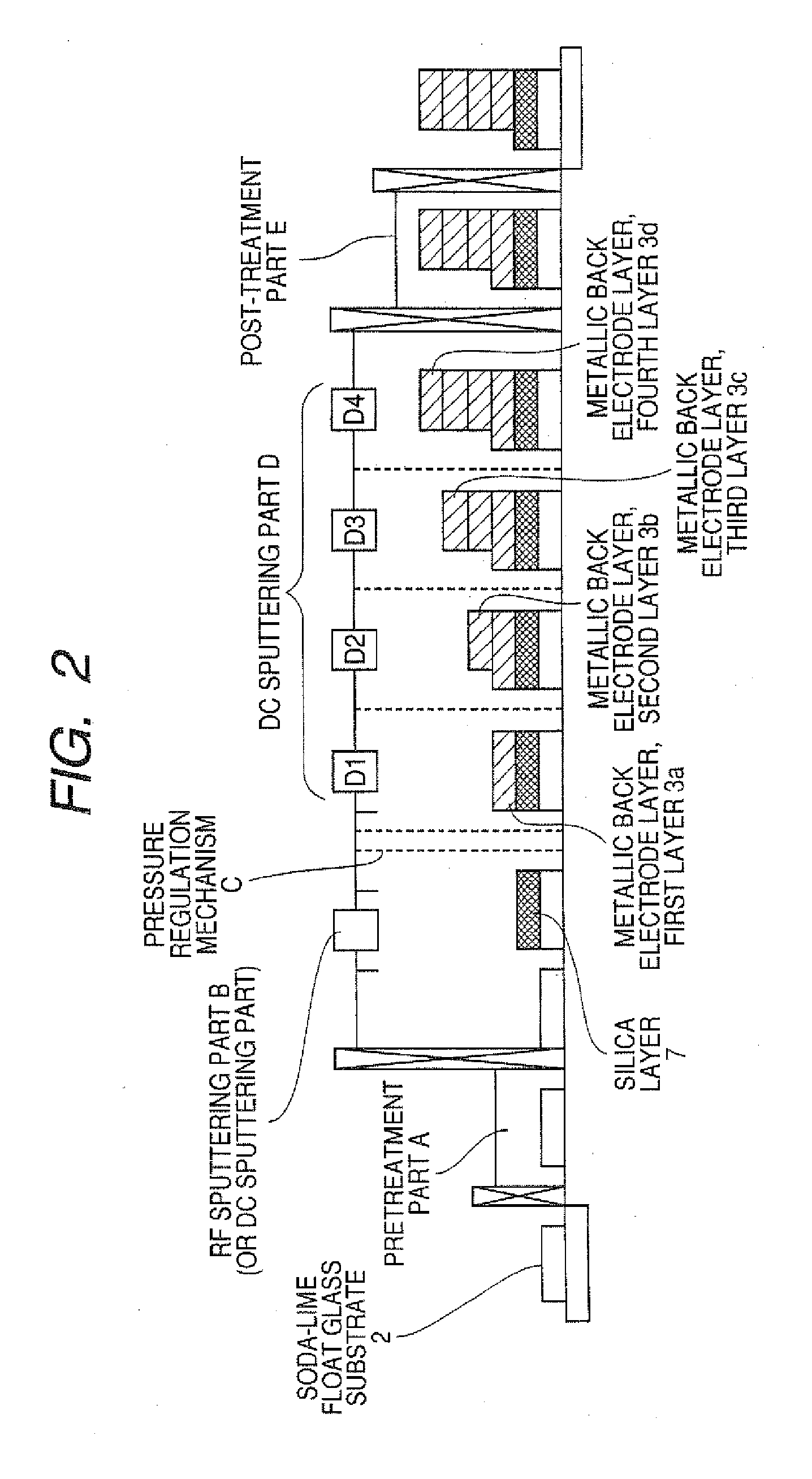Cis Type Thin-Film Solar Cell and Process for Producing the Same
a technology of cis type and solar cells, applied in sustainable manufacturing/processing, climate sustainability, semiconductor devices, etc., can solve the problems of reducing the life of the light absorption layer itself, and achieve the effect of preventing the light absorption layer, improving yield, and reducing the performance of the solar cell
- Summary
- Abstract
- Description
- Claims
- Application Information
AI Technical Summary
Benefits of technology
Problems solved by technology
Method used
Image
Examples
Embodiment Construction
[0042]Embodiments of the invention will be explained below.
[0043]The invention relates to a method of forming an alkali-barrier layer 8 for preventing and controlling the thermal diffusion of alkali ingredients from a soda-lime float glass substrate 2 into a light absorption layer 4 comprising a p-type semiconductor when the light absorption layer is deposited on a metallic back electrode layer 3 deposited on the soda-lime float glass substrate 2. The invention further relates to a CIS type thin-film solar cell 1 having the alkali-barrier layer 8.
[0044]This alkali-barrier layer 8 may be a first alkali-barrier layer which is a silica layer 7 formed on the soda-lime float glass substrate, or may be a second alkali-barrier layer which is a multilayered alkali-barrier layer composed of the silica layer 7 and the first layer 3a of the multilayered metallic back electrode layer directly overlying the silica layer 7.
[0045]The CIS type thin-film solar cell 1 of the invention has a basic str...
PUM
 Login to View More
Login to View More Abstract
Description
Claims
Application Information
 Login to View More
Login to View More - R&D
- Intellectual Property
- Life Sciences
- Materials
- Tech Scout
- Unparalleled Data Quality
- Higher Quality Content
- 60% Fewer Hallucinations
Browse by: Latest US Patents, China's latest patents, Technical Efficacy Thesaurus, Application Domain, Technology Topic, Popular Technical Reports.
© 2025 PatSnap. All rights reserved.Legal|Privacy policy|Modern Slavery Act Transparency Statement|Sitemap|About US| Contact US: help@patsnap.com



